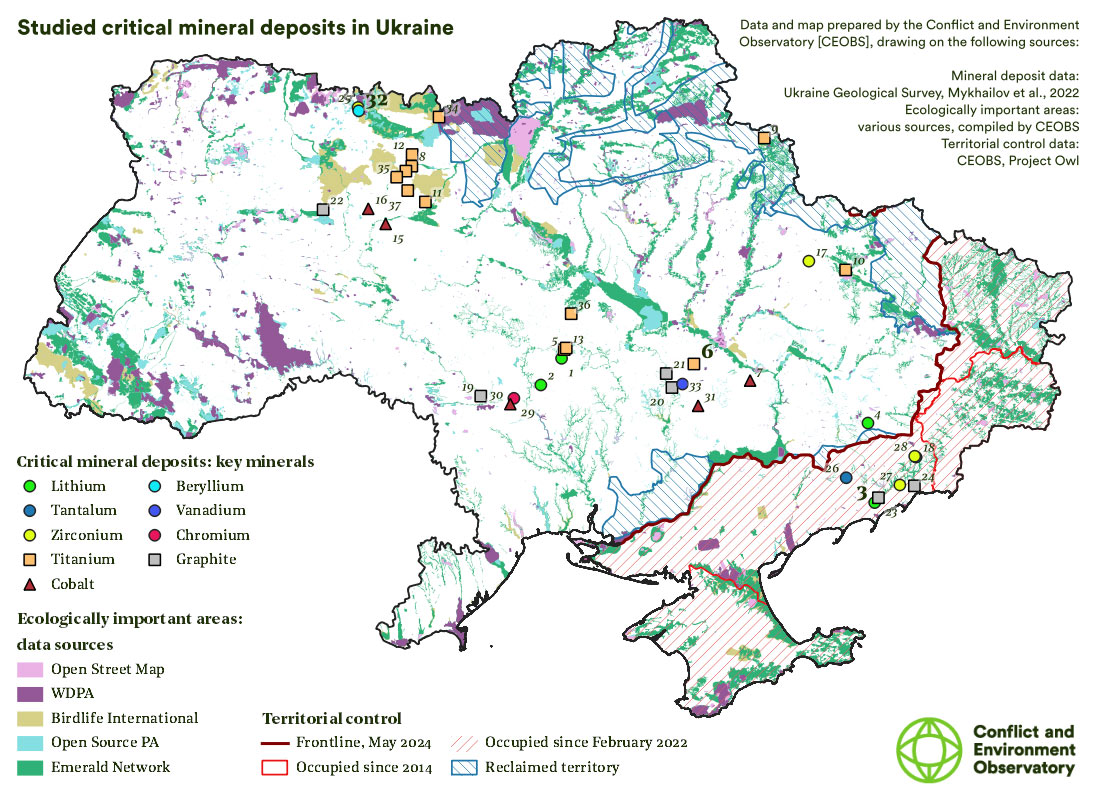
What Are Ukraine’s Rare Minerals and How Will the U.S. Be Able to Use Them?
The United States and Ukraine signed an agreement on Wednesday granting the U.S. access to Ukraine's natural resources, according to the U.S. Department of the Treasury. The U.S. Geological Survey considers 50 minerals critical, including rare earth elements, nickel, and lithium. These critical minerals are essential for industries such as defense, high-tech devices, aerospace, and green energy, reports Reuters.
Ukraine possesses deposits of 22 out of 34 minerals identified as critical by the European Union, according to Ukrainian data cited by Reuters.
This includes industrial and construction materials, ferroalloys, precious and non-ferrous metals, and some rare earth elements.
According to Ukraine's Institute of Geology, the country holds rare earth elements such as lanthanum and cerium, used in televisions and lighting; neodymium, used in wind turbines and electric vehicle batteries; and erbium and yttrium, with applications ranging from nuclear energy to lasers.
EU-funded research also indicates that Ukraine has reserves of scandium. Detailed data remains confidential.
The World Economic Forum reports that Ukraine is also a key potential supplier of lithium, beryllium, manganese, gallium, zirconium, graphite, apatite, fluorite, and nickel.
The State Geological Service states that Ukraine has some of the largest confirmed lithium reserves in Europe, estimated at 500,000 metric tons.
The country has titanium reserves primarily in the northwest and central regions, while lithium is found in the center, east, and southeast.
Ukraine's graphite reserves, a key component in electric vehicle batteries and nuclear reactors, represent 20% of global resources. Deposits are located in the central and western regions.
Ukraine also has significant coal reserves, although most are now under Russian control in occupied territories.
Mining analysts and economists note that Ukraine currently lacks commercially operational rare earth element mines.
China remains the world's largest producer of rare earth elements and many other critical minerals.
What Do We Know About the Agreement?
The two countries signed the agreement in Washington after months of sometimes tense negotiations, with uncertainty persisting until the last moment.
The agreement establishes a joint investment fund for Ukraine's reconstruction.
Simultaneously, Trump is seeking a peaceful resolution to the three-year war between Russia and Ukraine.

U.S. Treasury Secretary Scott Bessent and Ukraine's First Deputy Prime Minister Yulia Svyrydenko were photographed signing the agreement, as posted on X by the Treasury Department, stating that the agreement "clearly signals the Trump administration's commitment to a free, sovereign, and prosperous Ukraine."
Svyrydenko wrote on X that the agreement provides for Washington's contribution to this fund.
She also mentioned that the agreement includes new assistance, such as air defense systems for Ukraine.
The U.S. has not directly addressed this proposal.
Svyrydenko stated that the agreement allows Ukraine to "determine what and where to extract," and that its subsoil remains under Ukrainian ownership.
She emphasized that Ukraine has no debt obligations to the United States under the agreement, a key point in the prolonged negotiations between the two countries. She also noted that it aligns with Ukraine's Constitution and its campaign for European Union membership.
The draft did not provide any specific U.S. security guarantees for Ukraine, which was one of its initial goals, according to Reuters.
Which Ukrainian Resources Remain Under Kyiv's Control?
The war has caused significant damage across Ukraine, with Russia now controlling about one-fifth of its territory.
The majority of Ukraine's coal deposits, which powered its steel industry before the war, are concentrated in the east and have been lost to Kyiv.
Approximately 40% of Ukraine's metal resources are now under Russian occupation, according to estimates by Ukrainian think tanks "We Build Ukraine" and the National Institute for Strategic Studies.
Since then, Russian troops have continued to advance steadily in the eastern Donetsk region.
In January, Ukraine closed its only coking coal mine outside the city of Pokrovsk, which Moscow's forces are attempting to capture.
During the war, Russia has occupied at least two Ukrainian lithium deposits—one in Donetsk and another in the Zaporizhzhia region in the southeast.
Kyiv still controls lithium deposits in the central Kirovohrad region.





